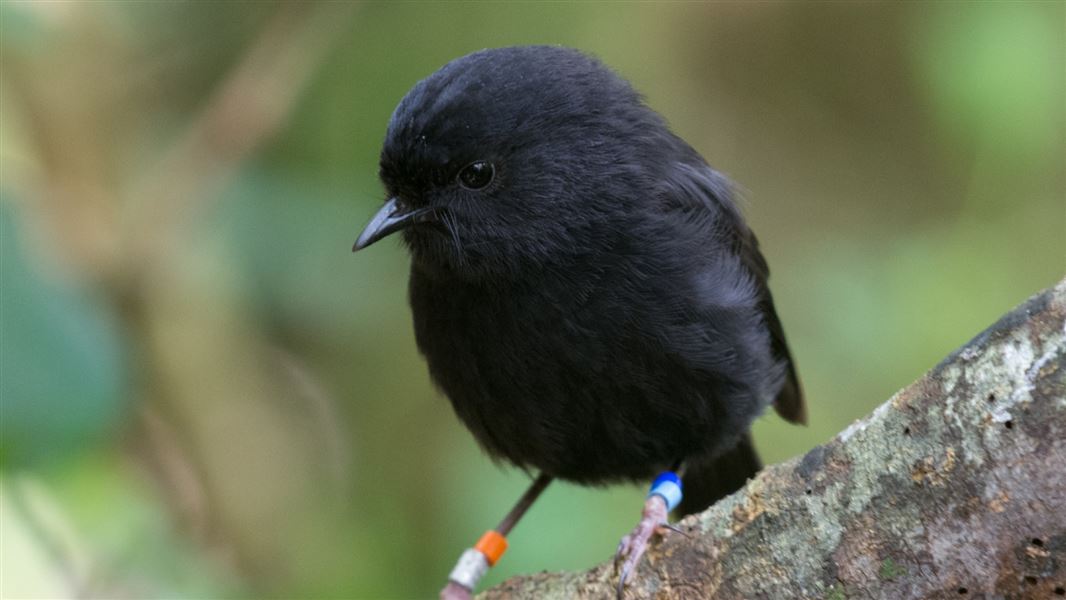Population: Around 300 in 2021
New Zealand status: Endemic
Conservation status: Threatened–Nationally Critical
Found in: Maung’Rē/Mangere and Hokoreroro/Rangatira/South East Island, in the Chatham Islands group.
Threats: Predation, disease
Species information: Black robin in NZ Birds Online
Did you know?
All of today's black robins are descended from the last breeding female, Old Blue. She was one of the longest-lived robins known, reaching 14 years old.
Black robin conservation
By 1900, the introduction of rats and cats following human settlement had wiped out the birds from everywhere apart from Little Mangere Island. The accidental introduction of predators to the two islands where it presently survives is still a threat.
All black robins have the same weaknesses and strengths, stemming from the fact they have similar DNA. This means that a single disease could kill them.
Escape from extinction
In 1972 wildlife officers could find only 18 black robins living on Little Mangere Island. In 1976 there were only seven birds left. These were all moved to Mangere Island where 120,000 trees had been planted to provide better shelter. By 1980 a further two birds had died, and none had bred.
There were only five black robins in the world in 1980, with just a single breeding pair left. The outlook was bleak, but a dedicated team of New Zealand Wildlife Service staff took the daring step of cross-fostering eggs and young to another species to boost productivity.
The last breeding pair named Old Blue (female) and Old Yellow (male), and a foster species, the Chatham Island tits, ended up saving the black robin from extinction.
In early 2013, the black robin population was around 250. Numbers remain stable. In 2021 the numbers were around 300.
Attempts made to establish another population in a fenced convenant on Pitt Island have failed, possibly due to competition for food with introduced mice.
Model for success
The fostering programme used to save the black robin was such a fantastic success that it has been used as a case model on how to save endangered birds around the world.
With the black robin population now well-established on Mangere and South East Islands, we hope to establish further populations in predator-free areas on Pitt and Chatham Islands.
There are even hopes that the black robin may one day be returned to its ancestral home, Little Mangere, where the vegetation is slowly regenerating.
You can help
If you are travelling to the Chatham Islands, or transporting goods or livestock there, be careful that you don't accidentally introduce pest animals, plants or diseases. These might threaten black robin or other rare and endangered flora and fauna in this unique environment.
